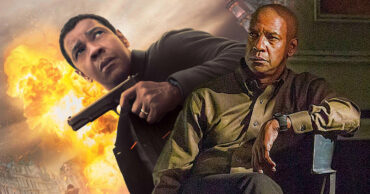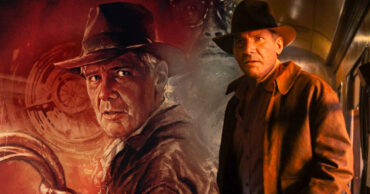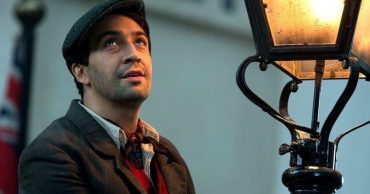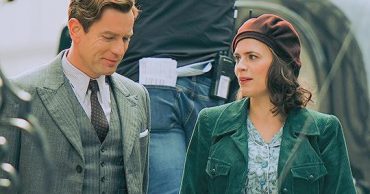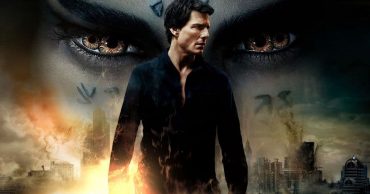
In 1979, a young actor named Mel Gibson was cast in the role of Max Rockatansky, a man on a mission to clean up a dangerous post-apocalyptic Australian wasteland, plus get revenge for the murder of his family. Although he hardly looked old enough to have a family (he was only 23 when cast in the role) Mel’s performance won critical acclaim and put him on the map as a star to watch. He starred in two of the Mad Max franchise sequels and then got another big break playing insane cop Martin Riggs, where he perfected the art of playing the crazy, “nothing to lose”style cop who lives on the edge. Not satisfied with being a box office mega star and being voted “The Sexist Man Alive” in 1985, he went on to form his own production company and eventually turned his hand to directing.
Whether in his private life, in front of the camera, or behind it, Mel Gibson has stirred up some controversy. His films can be described as “raw” and “voyeuristic” to the point of being distasteful to some. Mel Gibson has branded his own style of modern realism to the delight of his fans and the derision of his critics. Whether you love him or hate him, it’s clear his body of directorial work is impressive.
Here are 5 of the best films directed by Mel Gibson.
5. “The Man Without A Face”
In 1993 Mel starred and directed in a role that disguised half of his trademark good looks to play a disfigured painter Justin McLeod, who is brought back into the world through his friendship with a young boy. Facing prejudice due to the burns on half his face and body, McLeod, acting as the boy’s tutor is falsely accused of child molestation after the town learns his secret, which is that he spent years in prison.This was Gibson’s first foray wearing both the lead actor and director’s hat. Mel made some story changes to the Isabelle Holland novel. to make the relationship between the lonely man and boy less open to interpretation.
In true Mel fashion, he just changed what he didn’t like. Gibson had at first sought other actors to play the lead role, but then decided he was best off directing himself and the rest of the cast. He also was working on a thin budget and stepped in as lead to properly execute his vision of an emotionally challenging situation depicting the attitudes of a small New England town circa 1968. The camera angles showing the two sides of Mel’s face during close-ups work particularly well for dramatic effect.
4. “Apocalypto”
What could have been directed as “Escape from New York” Mayan style was instead treated respectfully and artistically through live action sequences that showed instead of told the story of man vs. nature and man vs. man during the end of the Mesoamerican tribal era. Making use of the Yucatan Mayan language interspersed with English subtitles, Gibson uses the threat of what’s coming in the underbrush and exquisitely epic yet grisly, human sacrifice scenes to capture the challenges facing a young man as he tries to escape what seems to be certain death to return home to his family. Yeah, we all heard about the tearing out of a beating heart in ancient civilizations, but where else have you ever seen it painstakingly shot on camera from the victim’s perspective?
3. “Hacksaw Ridge”
One of most talked about films of 2016 is Hacksaw Ridge, the story of a World War II medic who eschews the violence of war, yet finds himself deep in the trenches of war without a gun. In this film, Gibson hands over the leading man role to actor Andrew Garfield, to bring to life a screenplay written by Robert Schenkkan and Andrew Knight. Based on the true story of Desmond T. Doss, whether in the heat of action on the battlefield or in personal conflict with those in his battalion about his conscientious objector beliefs, Mel Gibson knew how to pull out a performance from his cast. “Hacksaw Ridge” shows the horrors of war without resorting to the over the top theatrics inclusive in some war films.
2. “The Passion of The Christ”
If you’ve tired of religious films depicting a placid, blond, English speaking Jesus being crucified with barely a whimper, it’s time to check out “The Passion of The Christ”, Mel Gibson’s 2004 personal achievement as director that had folks on both sides of the aisle during screening, some with sick bags in hand due to the graphic violence. One vocal critic, actor Brad Pitt, said that “The Passion of the Christ” was like L. Ron Hubbard propaganda, although he did enjoy “Apocalypto”. “The Passion of the Christ” is 126 minutes that tells the brutal story of the last 12 hours of Jesus’ life on earth. Whether you believe in Jesus as the savior of the world or not, crucifixion was a popular form of execution back then and it wasn’t pretty–it was indeed a torturous way to die.
Mel’s use of graphic detail and having the actors speak in Aramaic with subtitles lends authenticity to the period piece. Being a devout Catholic, Gibson felt it was important to tell the unsanitized truth about the death of Jesus and denies accusations that he is an anti-Semite. Whether you are an old school Christian who adored the film or a progressive minded person who sees Gibson as directing the first “religious snuff flick”, no one can deny “The Passion of The Christ” is an important film in Mel’s directorial portfolio.
1. “Braveheart”
“Braveheart” rates #1 as Mel was a triple threat as lead actor, producer, and director of this 1995 film showing how the Scots fought back against King James I during the 1300s. Gibson plays a character based on freedom fighter William Wallace. Doing what Mel does best, he captures the mood of a man who has nothing to lose as he has lost al already so he’s all in for the fight. From epic battle scenes with braids and painted faces to a love story backdrop, this film won Academy Awards for Best Picture and Best Director in 1996. Most will remember the old style execution laid on poor William Wallace-hanging till half dead, revived, drawn and quartered and then beheaded.
They also castrated men during these unmerciful deaths, but Mel did spare us the castration part but the rest was pretty vivid in carefully edited cuts and Gibson’s facial close-ups and the ethereal specter of Wallace’s wife in the crowd. The slow motion ax falling had folks in theaters peeping through their fingers when not biting their nails and then cheering on these historic warriors for “Freedom!”
 Follow Us
Follow Us
